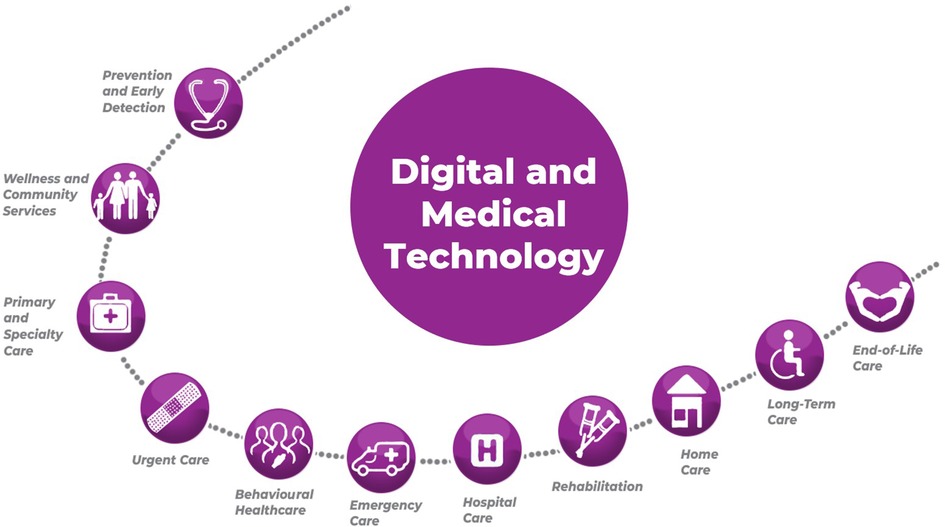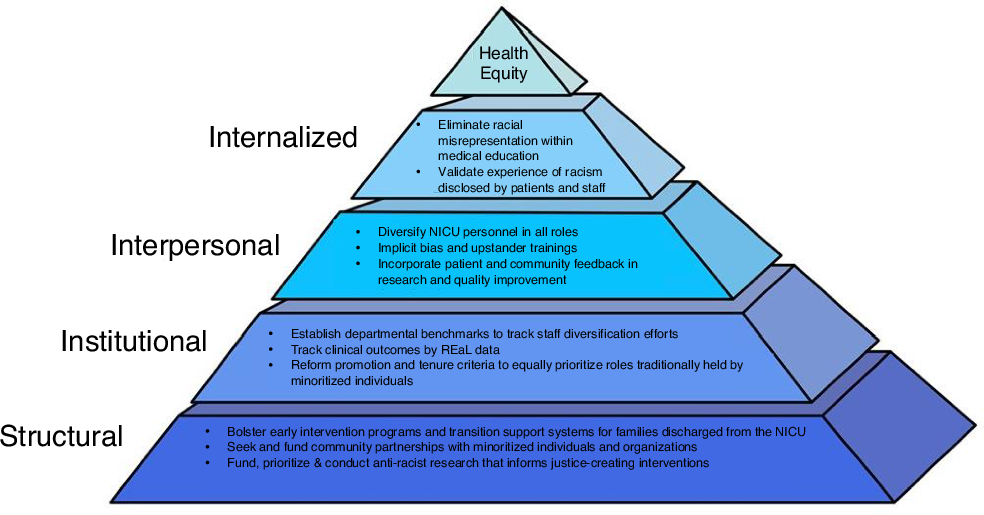How do we ensure digital health tools reduce health inequalities? – Health Tech World

Advancing Sustainable Development Goals Through Equitable Digital Health
Digital health technologies present a significant opportunity to advance global health outcomes, directly contributing to Sustainable Development Goal 3 (Good Health and Well-being). However, without intentional and inclusive design, these innovations risk exacerbating existing disparities, thereby undermining SDG 10 (Reduced Inequalities). This report synthesizes expert perspectives on strategies to ensure digital health serves as a driver of equity, aligning technological progress with the core principles of the Sustainable Development Goals.
Foundational Principles for Inclusive Design and Health Equity (SDG 10)
To ensure digital health tools promote inclusivity, their design and implementation must be deliberate and human-centred. This approach moves beyond simply digitizing existing processes to fundamentally reimagining access for historically underserved populations. A consensus emerges that true equity is achieved by embedding inclusive principles from the very beginning of the development process.
- Co-Design with Communities: Engaging healthcare professionals, patients, and diverse communities in the co-design process is fundamental. This collaborative approach helps identify and address barriers such as language, culture, and varying literacy levels, ensuring solutions are usable, accessible, and meet genuine user needs.
- Prioritize Underserved Groups: Development must start with a focus on those who have been historically marginalized. By building systems to bridge existing gaps in care, technology can create a tangible impact on health disparities.
- Integrate Empathy with Technology: Equity is not achieved by technology alone. The most effective systems are those that combine automation with human empathy, creating a “high-tech, high-touch” environment that ensures no patient is left behind.
- Enforce a Consistent Standard of Care: Digital tools should be engineered to enforce a consistent, high-quality standard of care for every patient, regardless of their location or background, thereby reducing systemic variations in treatment safety and quality.
Overcoming Digital Poverty and Accessibility Barriers (SDG 9 & SDG 10)
A primary obstacle to achieving equitable digital health is digital poverty, which encompasses a lack of devices, poor connectivity, and insufficient digital skills. Addressing this challenge is crucial for leveraging innovation in line with SDG 9 (Industry, Innovation, and Infrastructure) while simultaneously reducing inequality.
- Provide Multiple and Flexible Pathways to Care: True equity involves creating a system with multiple, flexible ways for patients to engage with care. Recognizing diverse barriers like working patterns or digital confidence, providers should offer various options, including voice-enabled tools, rather than forcing everyone down a single digital path.
- Ensure Technological Accessibility: To avoid excluding those who cannot afford specialized devices, digital health solutions should utilize technology that most people already possess, such as smartphones. Tools must also be designed to function on older devices and with optimized data requirements to remain affordable and accessible.
- Focus on Purpose-Driven Partnerships: Overcoming the digital divide requires purpose-driven initiatives and partnerships that deliver a measurable impact on improving digital skills and access within communities.
The Role of Data and AI in Promoting Equity (SDG 3, SDG 5, SDG 10)
Data and Artificial Intelligence (AI) are at the core of digital health innovation, but they can either reinforce or reduce health inequalities. A responsible approach to data governance and AI development is essential for achieving health-related SDGs.
- Ensure Diverse and Representative Data: AI is only as effective as the data it is trained on. To prevent bias, training datasets must reflect the full diversity of humanity, including gender and racial diversity as well as data from rural and less privileged communities. This commitment directly supports SDG 5 (Gender Equality) and SDG 10.
- Maintain Data Integrity and Governance: The foundation for equitable health analysis is accurate, complete, and validated data integrated from across care settings. Poor-quality or biased data risks reinforcing existing disparities, while well-managed data enables real-time insights to address gaps before they become systemic.
- Utilize Data for Proactive Intervention: Digital tools can analyze health data to identify at-risk patients in deprived areas who may not be receiving timely specialist care. This allows healthcare systems to proactively close access gaps and improve population health outcomes, directly contributing to SDG 3.
Fostering Strategic Partnerships and Systemic Integration (SDG 3 & SDG 17)
The successful deployment of equitable digital health solutions requires systemic integration and robust collaboration, reflecting the spirit of SDG 17 (Partnerships for the Goals). By focusing on high-impact areas and fostering cooperation, digital tools can deliver measurable improvements in care.
- Target High-Impact Health Conditions: Digital transformation should be prioritized in areas where it can have the greatest impact on inequality, such as cardiovascular disease (CVD). Digital pathways can ensure seamless care across acute, community, and primary settings, preventing patients from falling through gaps.
- Promote Inter-Organizational Collaboration: Large-scale digital initiatives, such as diagnostic networks, are most effective when they facilitate the sharing of expertise across organizational boundaries. This collaborative model is fundamental to improving access to highly demanded clinical insights for all populations.
- Unify Data for Scalable Equity: When built on unified data platforms and intelligent automation, digital health tools can extend equity by meeting patients where they are. This approach supports the human connection at the heart of care while driving access and inclusivity at scale.
- Prioritize and Measure Outcomes: Investment in digital health should be evaluated based on its ability to reach underserved groups, enable earlier prevention, and deliver measurable improvements in care, ensuring alignment with the targets of SDG 3.
Analysis of the Article in Relation to Sustainable Development Goals
-
Which SDGs are addressed or connected to the issues highlighted in the article?
The article on digital health and equity connects to several Sustainable Development Goals (SDGs). The primary focus is on health and reducing inequalities, but it also touches upon innovation, infrastructure, and partnerships.
-
SDG 3: Good Health and Well-being
This is the most central SDG addressed. The article revolves around revolutionising healthcare to make it “more affordable, personalised and efficient.” It discusses specific health challenges like Cardiovascular Disease (CVD) and the role of digital tools in improving patient outcomes, ensuring seamless care, and enabling earlier prevention. The goal is to ensure healthy lives and promote well-being for all, which is the core mission of SDG 3.
-
SDG 10: Reduced Inequalities
This SDG is a core theme of the article. The text repeatedly warns that digital health technology “risks deepening existing inequalities.” It highlights the need to design inclusive systems that serve everyone, regardless of background or circumstance. Experts in the article discuss overcoming barriers related to “language, literacy, or culture,” “digital poverty,” and reaching “historically underserved” communities. The entire discussion is framed around ensuring digital health becomes a driver of inclusion rather than division, directly aligning with the goal of reducing inequality within and among countries.
-
SDG 9: Industry, Innovation, and Infrastructure
The article is fundamentally about the application of technology and innovation (“digital health tools,” “AI,” “automation”) to the healthcare industry. It also implicitly addresses infrastructure by highlighting challenges like “poor connectivity” and lack of “access to devices,” which are critical components of the digital infrastructure required for these tools to be effective and equitable. The focus on building resilient and accessible digital systems supports the aims of SDG 9.
-
SDG 17: Partnerships for the Goals
The article emphasizes the need for collaboration to achieve equitable digital health. Dr. Rachael Grimaldi states, “we should work with healthcare professionals, patients and communities to build solutions together.” Similarly, Kath Dean mentions the importance of “co-design with frontline staff and communities.” This collaborative approach reflects the spirit of SDG 17, which promotes partnerships between governments, the private sector, and civil society to achieve sustainable development.
-
-
What specific targets under those SDGs can be identified based on the article’s content?
Based on the issues discussed, several specific SDG targets can be identified:
-
Targets under SDG 3: Good Health and Well-being
- Target 3.8: Achieve universal health coverage, including financial risk protection, access to quality essential health-care services and access to safe, effective, quality and affordable essential medicines and vaccines for all. The article’s emphasis on making healthcare “affordable,” improving “access to care,” and ensuring “every patient… can access the support they need” directly relates to this target.
- Target 3.4: By 2030, reduce by one third premature mortality from non-communicable diseases through prevention and treatment and promote mental health and well-being. Dr. Eleanor Wicks’ point about using digital tools for “digital risk assessment, prompts and personalised interventions” for high-risk groups with Cardiovascular Disease (CVD) aligns with this target of preventing and treating non-communicable diseases.
-
Targets under SDG 10: Reduced Inequalities
- Target 10.2: By 2030, empower and promote the social, economic and political inclusion of all, irrespective of age, sex, disability, race, ethnicity, origin, religion or economic or other status. The article’s core message is to design digital health tools with “inclusivity as a top priority” to overcome barriers faced by people who are “older, poorer, less well educated, having a long-term illness or disability.”
- Target 10.3: Ensure equal opportunity and reduce inequalities of outcome. The goal described by Nicholas Appelbaum to “enforce a consistent standard of care for all patients, guaranteeing that everyone receives the same high-quality, safe treatment” is a direct reflection of this target.
-
Targets under SDG 9: Industry, Innovation, and Infrastructure
- Target 9.c: Significantly increase access to information and communications technology and strive to provide universal and affordable access to the Internet. The article identifies “digital poverty,” which includes “poor connectivity or a simple lack of digital skills,” as a major barrier. The call to use technology people already own, like smartphones, supports the goal of providing affordable and universal access.
-
-
Are there any indicators mentioned or implied in the article that can be used to measure progress towards the identified targets?
The article does not mention official UN SDG indicators, but it strongly implies several metrics and methods for measuring progress towards health equity.
-
Implied Indicators for Measurement
- Reach and engagement of underserved groups: Kath Dean suggests progress can be measured by “evaluating whether digital tools help reach underserved groups.” This implies an indicator tracking the proportion of users from various demographic and socioeconomic backgrounds (e.g., rural, low-income, different ethnicities).
- Measurable improvements in care outcomes: The article mentions the need to “deliver measurable improvements in care.” This points to tracking specific health outcomes (e.g., reduced hospital readmissions for heart failure patients, earlier disease detection rates in deprived areas) and comparing them across different patient populations.
- Use of diverse and representative data: Josh Miller and Christy Prada highlight the importance of training AI on data that “truly reflects humanity” and is validated on “diverse, multi-site datasets.” An indicator could be the diversity and representativeness of the datasets used to develop and validate digital health tools.
- Accessibility and usability metrics: The need for tools to be “easier to use,” “run on older devices,” and be designed with “usability and accessibility” in mind implies indicators related to user satisfaction, ease of use, and technical accessibility for people with varying digital literacy and older hardware.
- Data-driven analysis of patient cohorts: Graham Bennett emphasizes the need for “validated, integrated data from across care settings” for “robust analysis of patient cohorts.” This suggests using integrated data systems to monitor and report on health disparities between different groups in real-time.
-
-
Create a table with three columns titled ‘SDGs, Targets and Indicators” to present the findings from analyzing the article.
SDGs Targets Indicators (as implied by the article) SDG 3: Good Health and Well-being - 3.8: Achieve universal health coverage and access to quality, affordable healthcare.
- 3.4: Reduce premature mortality from non-communicable diseases through prevention and treatment.
- Measurement of improvements in care quality and efficiency.
- Tracking of earlier disease detection rates, especially for conditions like CVD in high-risk groups.
- Monitoring patient access to specialists and sustained treatment.
SDG 10: Reduced Inequalities - 10.2: Empower and promote the social inclusion of all, irrespective of age, disability, race, economic status, etc.
- 10.3: Ensure equal opportunity and reduce inequalities of outcome.
- Evaluation of whether digital tools successfully reach and are used by underserved groups.
- Analysis of health outcome data disaggregated by demographic and socioeconomic factors.
- Metrics on the diversity (gender, race) of data used in clinical research and AI training.
SDG 9: Industry, Innovation, and Infrastructure - 9.c: Significantly increase access to information and communications technology (ICT) and provide universal, affordable internet access.
- Assessment of digital tool accessibility (e.g., compatibility with older devices, low data requirements).
- Tracking the availability and affordability of devices and connectivity in underserved communities.
SDG 17: Partnerships for the Goals - 17.17: Encourage and promote effective public, public-private and civil society partnerships.
- Number and effectiveness of co-design initiatives involving patients, communities, and frontline staff.
- Establishment of partnerships focused on delivering measurable social impact.
Source: htworld.co.uk

What is Your Reaction?
 Like
0
Like
0
 Dislike
0
Dislike
0
 Love
0
Love
0
 Funny
0
Funny
0
 Angry
0
Angry
0
 Sad
0
Sad
0
 Wow
0
Wow
0
















































/environment-climate-change-and-health-(ech)/water-sanitation-hygiene-and-health-(wsh)/landfill-tuvalu-36092.tmb-1200v.jpg?sfvrsn=5c21fe40_1#)

.jpg.webp?itok=0ZsAnae9#)


























